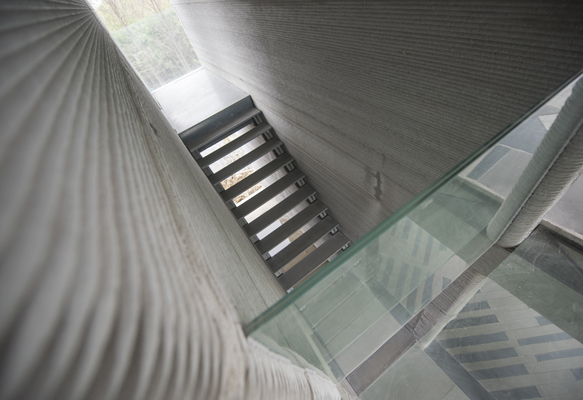Innovative technologies and disruptive business models are rapidly transforming the modern corporate landscape. Tech startups, like Uber and Airbnb, have already radically altered how long-standing industries operate and, in the process, made traditional companies more open to novel business approaches and ideas.
The rise of additive manufacturing, which is often referred to as 3D printing, reflects the changing attitudes of manufacturers and multinationals, which are all on the search for technologies that will give them a competitive edge and are willing to invest heavily to achieve this goal.
Instead of viewing the advent of additive manufacturing as a threat to their bottom line, forward-thinking enterprises have on the whole embraced this cutting-edge technology, and are implementing it across the enterprise. The image of 3D printing as a fad or niche tool that is only appropriate for prototyping has long gone, with the strong business case behind additive manufacturing paving the way for widespread adoption.
“Industrial 3D printing is currently changing the world of production. The technology enables completely new degrees of freedom in terms of design and production, and it is increasingly being used in serial manufacturing. The technology differs significantly from conventional manufacturing methods. Instead of, for example, milling a workpiece from a block, additive manufacturing builds components layer by layer,” explains Bertrand Humel van der Lee, Chief Customer Operations Officer at German industrial 3D printing leader EOS.
Transforming industry
Companies are able to select different materials, including plastics, metals, and other composite materials, that are best suited to the needs of the product being manufactured. Adjustments to design elements can be made at any time to improve the product at no cost, resulting in massively reduced development cycles, thanks to staff being able to quickly change the 3D data.
The diversity of applications of additive manufacturing is a key reason why this innovation is gaining support from an array of companies in many sectors, with the seamless integration of 3D printing into the wider manufacturing process being seen most obviously in the aerospace, jewellery, medical, defence and automotive industries. In the footwear industry, 3D printing allows designers to explore new designs and also reduce on waste, as you only use the quantity of materials you need.
Businesses that produce a relatively small number of complex products using expensive materials were early adopters of additive manufacturing. Reducing waste by even a moderate amount when using precious metals like gold and platinum can result in substantial cost savings. Highly detailed jewellery products that require extensive customisation are a perfect example of where additive manufacturing can be used to achieve real product improvements.
For example, 3D printing empowers goldsmiths to create intricate rings, bracelets, and necklaces with complete creative freedom, thanks to the layering ability that allows for products to be made with unique shapes and dimensions far more easily than conventional methods.
The across-the-board appeal of additive manufacturing is driving this technological tool forward. According to market research firm Statista, the number of 3D printers sold worldwide in 2020 is expected to total 6.7 million, up from just over 219,000 in 2015. These figures can only be expected to rise even higher as the potential applications of additive manufacturing increase.
Practical implementation
Today, aerospace companies are 3D printing replacement parts, product prototypes and other complex pieces, and in the near future much larger items, including aircraft wings, could be made with additive manufacturing. “For example, using EOS technology, space-launcher firm ArianeGroup was able to reduce the injector head of a rocket engine powering the Ariane 6 from 248 individual parts to one single functionally integrated component,” says Mr Humel van der Lee.
By producing the injector head using additive manufacturing, ArianeGroup also made the engine part 25% lighter than the last version and reduced production time by a factor of three. Thanks to these manufacturing advances, the cost of creating the injector head fell by 50%.
Beyond cost savings, 3D printing has the potential to remove a number of manufacturing barriers that have limited the operations of the aerospace sector. Additive manufacturing may already be used to print lightweight and high-strength parts for spacecraft, yet it won’t be long until the next generation of 3D printers can be sent to space in manned missions and manufacture vital parts as they are needed.
It is not just products and parts that 3D printing can create, with entire houses being constructed through additive manufacturing. Sheikh Mohammed bin Rashid Al Maktoum, Ruler of the Emirate of Dubai, launched a 3D printing strategy in 2016 that pushes for at least 25% of new buildings built from 2025 to be made using 3D printing. A project of this scope is certainly challenging, but if successful, it will bring down labour requirements by 70% and reduce construction costs by 90%, according to the Dubai Future Foundation forecast.
Making the wholesale shift to additive manufacturing can often be an extremely complex endeavour for enterprises and in the past this challenge may have delayed its widespread implementation, but the evidence is quickly mounting that the benefits 3D printing offers overweigh the negatives, as long as a great deal of thought is given to exactly what additive manufacturing tools are needed.
“The additive manufacturing equipment needs to be reliable and easy to use such that in-house engineers and technicians spend minimum amounts of time operating and maintaining it. The choice of equipment should be made with emphasis on usability and manufacturer’s support in integrating additive manufacturing into existing operations,” says Dr Andrei Neboian, CEO of Austria-based 3D printer maker Xioneer Systems.
Hampering adoption
Additive manufacturing’s potential may be tremendous but, as with most ground-breaking innovations, other parts of industry and the wider economic ecosystem need to play catch-up. The lack of additive manufacturing experts with the necessary training and education in this relatively new field is limiting 3D printing’s full capabilities, with the personnel who possess the right skills being in extremely high demand.
“There is still limited knowledge on additively produced metals,” says Dr Uwe Schuetz, Head of Internal Communications at Siemens Power and Gas. “We observe that customers might be concerned regarding certain applications until they feel fully comfortable and have a clear understanding of material behaviours. Our experts consult with our customers and share our own experiences as a user of additive manufacturing within the energy sector.”
It’s not just technical talents who will
make the evolution to additive manufacturing less problematic, as design experience is vitally important for any successful additive manufacturing project. The vast majority of industrial designers have little experience of designing for additive manufacturing and an equally weak knowledge of the materials used in the 3D printing process.
The fact that additive manufacturing allows for almost unlimited flexibility in the design process is a major benefit but, in practice, also means that designers need to fundamentally change their traditional way of working, which is constrained by conventional manufacturing techniques.
Even as the initial tooling costs of additive manufacturing are lower than conventional production methods, this cost advantage is currently lost as production levels grow, meaning high production costs still remain a barrier to widespread adoption. Over time, this disparity is set to change as additive manufacturing becomes more cost effective, especially as the majority of 3D printing machines in operation today were created as prototyping tools rather than as industrial-scale production machines.
“3D printing enables cutting-edge technologies and improved time-to-market and the quick upgrading of existing assets. Recent advancements in the technology have enhanced the potential of additive manufacturing to fully manufacture production parts. Fiber lasers are now available with enough power to melt high-performance metal alloys to manufacture gas turbine or jet engine parts,” says Dr Schuetz.
“Additive manufacturing opens up huge opportunities by revolutionising designing, manufacturing and repairing of components. Industrial 3D printing offers a variety of benefits driving the future of manufacturing, including rapid iteration, optimised design parameters, application-specific designs, and a lowering of materials costs and production time,” he adds.
The business benefits of additive manufacturing are clear, and so too is the strong interest in this burgeoning technology from diverse industry sectors. According to market research firm Research and Markets, the global 3D printing market is on course to grow at over 20% each year until 2022.
The success of additive manufacturing will rely on its practical integration into Industry 4.0 strategies. In an age of automation, machine-learning and cloud computing, so-called Smart Factories will be able to harness the capabilities of 3D printing as a central part of a new industrial programme. The potential of adding value to products with additive manufacturing is almost unlimited and few supply chains, factories and business strategies will be untouched by this innovation.

“With Industry 4.0, additive manufacturing will provide greater flexibility and agility for intelligent production and supply chains. This creates a highly agile factory of the future, with increased adaptability to changing market demands and fluctuations. It is important that companies deal in a timely manner with technologies that have the potential to disrupt – whether it be to defend effectively one’s own business model or to enter new business areas. For this, industrial 3D printing plays a decisive role,” concludes Mr Humel van der Lee.






